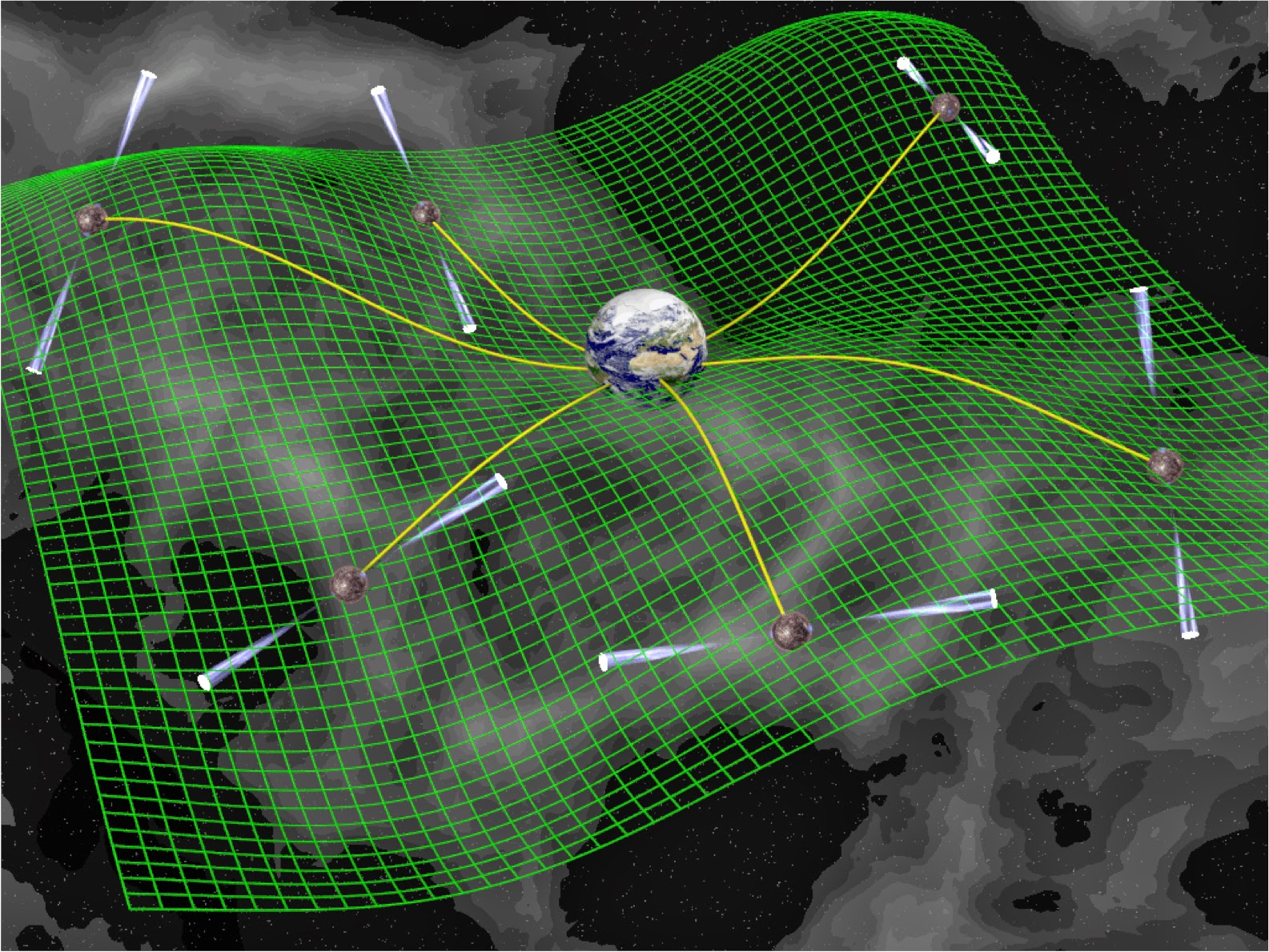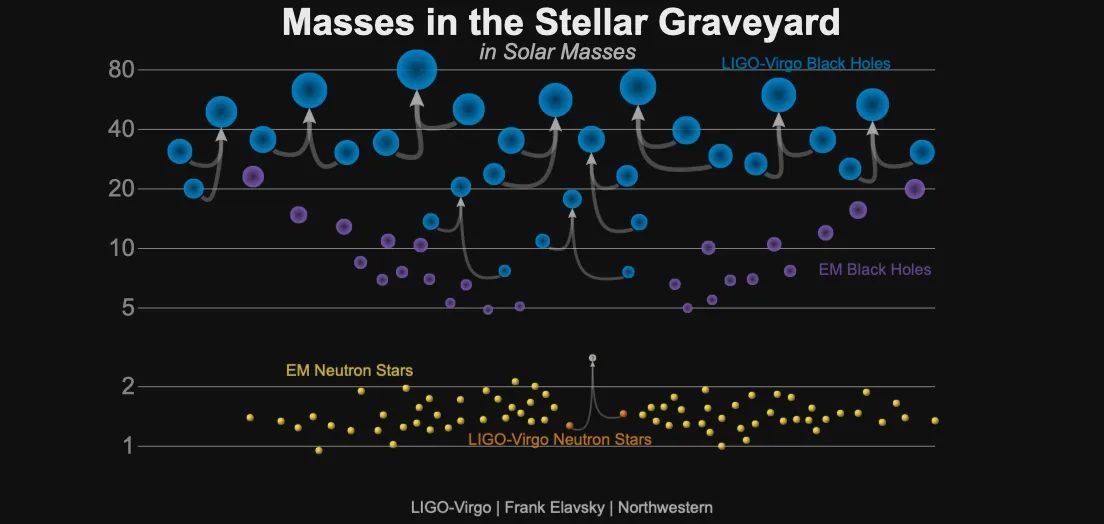Gravitational Wave Astrophysics
Professor Taylor’s VIPER Group (Vanderbilt Initiative in Probes of Extreme Relativity) is leading VIDA’s efforts in Multi-messenger Gravitational-wave Astrophysics. The highly relativistic dynamics of systems of massive compact objects like neutron stars and black holes create ripples in the fabric of spacetime. These ripples are gravitational waves (GWs), a prediction of Einstein's 1915 General Theory of Relativity. A prediction that is now fact. Gravitational waves are a window onto the warped side of the Universe, allowing us to glimpse Black Holes and test fundamental physics.
Pulsar Timing Arrays
  |
The first direct detection of GWs was delivered by LIGO, the Laser Interferometer Gravitational-wave Observatory on September 14th, 2015. It has made many more since. However, the first hint of gravitational radiation came from the long-term monitoring of the orbital decay of binary pulsar B1913+16, which garnered the 1993 Nobel Prize in Physics. The precision timing of pulsars can in fact be used to synthesize a Galactic detector web that is sensitive to the most massive black holes in the Universe, 108-1010 larger than what LIGO can see. Pulsar Timing Arrays (PTAs), such as NANOGrav (the North American Nanohertz Observatory for Gravitational Waves) have observed more than 70 pulsars over the last 10-15 years in a bid to be the next great GW observatory, opening up a heretofore unexplored part of the GW landscape. Professor Taylor and collaborators showed that this detection has a high probability of occuring by ~2022-2026. This research appeared in ApJ Letters, and featured in the popular science book “Ripples in Spacetime: Einstein, Gravitational Waves, and the Future of Astronomy”. PTA research at Vanderbilt is focused on astrophysical model-building and developing new statistical approaches to nanohertz GW searches.
Gravitational Wave Demography
  |
PTAs expect to first detect the aggregate GW signal of an entire population of emitting Supermassive Binary Black Holes. This “GW Background” directly encodes statistical details of the merger rate of massive galaxies, the relationship between supermassive black holes and host galaxies, and the dynamical interactions of supermassive binary black holes in the final parsec of their evolution. Professor Taylor and collaborators developed a new technique to create a fast Gaussian-process emulator of expensive massive binary black-hole population synthesis simulations, and placed the first statistically-robust constraints on the dynamical environments of binaries in the PTA band. This research was featured in Physical Review Letters, and was deployed on NANOGrav’s 11-year Dataset consisting of 45 millisecond pulsars.
In the same sense, catalogs of GW detections from LIGO can be explored to probe the expansion rate of the Universe (the Hubble constant, and the Dark Energy equation of state), and mined to investigate the formation channels and progenitor properties of systems of stellar-mass binary black holes. Professor Taylor has developed novel and powerful new strategies for these goals on vastly different scales, showing that a catalog of ~100 Double Neutron Star detections by LIGO will be enough to pin down the Hubble constant using GWs to within ~15%. This technique will play a crucial arbitrating role in tackling the current tension between CMB and SNIa measures of the Hubble constant. Likewise, the existing LIGO catalog is enough to strongly suggest that heavy stellar-mass black holes form in low metallicity astrophysical environments.